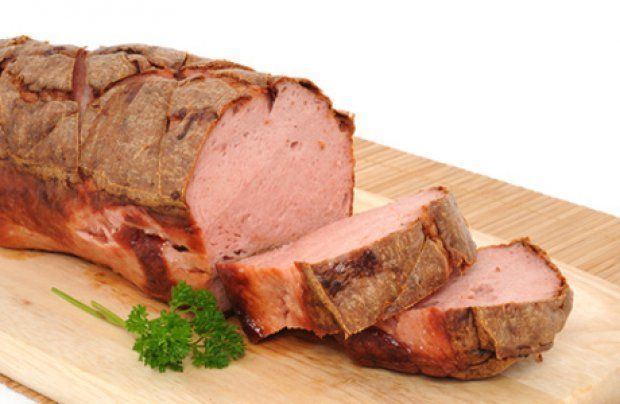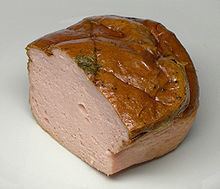 | ||
Similar Landjäger, Turducken, Short loin, pork jowl, Weisswurst | ||
Wiesn burger mit leberk se oktoberfest spezial felicitas then pimp your food
Leberkäse (German, literally means 'liver cheese'; sometimes spelled Leberkäs or Leberka(a)s in Austria and the Swabian, Bavarian and Franconian parts of Germany and Fleischkäse in Saarland, Baden, Switzerland and Tyrol) is a specialty food found in the south of Germany, in Austria and parts of Switzerland, similar to bologna sausage. It consists of corned beef, pork, bacon and onions and is made by grinding the ingredients very finely and then baking it as a loaf in a bread pan until it has a crunchy brown crust.
Contents
- Wiesn burger mit leberk se oktoberfest spezial felicitas then pimp your food
- History
- Methods of eating
- Variants
- References

History

Fleischkäse is said to have been invented in 1776, although this story has been heavily contested. The name "Leberkäse" literally translates to "liver-cheese" but developed by folk etymology from an archaic form of the word Laib ("loaf") and Käse ("cheese") (cf. English "head cheese"); not all products bearing the name necessarily contain liver or cheese, let alone both: According to German food laws, only products called "Bavarian Leberkäse" are allowed not to contain liver; otherwise, there must be a minimum liver content of 4%. Some local variants must contain even more liver; for example, the liver content of "Stuttgarter Leberkäse" must be at least 5%. The type without liver is normally called Fleischkäse (meat cheese) if it is not made in Bavaria.
Methods of eating
Leberkäse is traditionally enjoyed in a variety of ways, including:

Variants
Known variants include:

In addition, many butchers have invented their own unique varieties.
